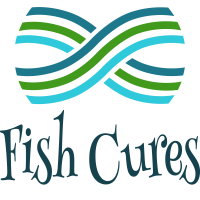 |
About Us |
|---|
Methylene Blue
Methylene Blue is a chemical dye with antibacterial, antifungal and antiparasitic properties. It is most often used to avoid fungus killing eggs from a spawn; however, can be used on older fish with caution as noted below. For freshwater or saltwater.
Dose a pinch at a time or by premixing a solution with 1/2 teaspoon powder to 8 ounces distilled water. When dosing with a chemical dye, such as Methylene Blue Powder, it is best to dose by color and not by a measured amount.
Treatment: A simple way to dose is to add 1 drop premix or use the dry powder by small pinches at a time until the water is a light to medium blue. It is best to not overdose as it will have a negative affect. Always treat in a separate quarantine tank as this chemical dye will kill off the bacteria required to sustain a healthy biological cycle and process waste.
Toxic to live plants.
Can be used with invertebrates.
Silicone seals, decor and even the tank glass itself may become stained and remain blue.
Avoid skin contact. Methylene Blue is an irritant and not easily removed.
Avoid getting on clothing as it will create a permanent stain
Treatment of Eggs: When pulling the eggs from the parents place the breeding slate or cone in a hatching container. Add Methylene Blue by the drop or pinch. The water should be a light to medium blue and the eggs should remain visible. Approximately 2-6 hours prior to expected hatch the eggs should be removed from this chemical dye as it is known to burn the gills and is suspected of causing the swim bladder to not properly inflate, greatly affecting the fry’s ability to swim and remain suspended in the water column. All traces of Methylene Blue should be removed prior to the eggs hatching, which will occur around 48 hours for freshwater angelfish after spawning if kept at 80F.
Dip Treatment: Kills external parasites such as flukes, ich, oodinium and some protozoa. In a quarantine tank place fish to be treated. Dose 1/2 tablespoon premix solution per gallon QT water or dose dry powder until QT water turns a very dark blue. Leave fish in this dip for no more than 10-15 seconds to avoid gill damage.
Nitrite or Cyanide Poisoning Treatment: When fish have been exposed to cyanide or high levels of nitrite their ability to take in enough oxygen is greatly depleted. Treating these fish with Methylene Blue can help to raise the oxygen levels as it increases the oxygen carrying hemoglobin in the blood. Follow directions below for preparation.
Preventative or Low Dose Treatment: 1 teaspoon premix solution per 2 gallons water or dose dry powder until QT water turns light blue. Add fish to this solution for a maximum of 1 hour with saltwater species or 10 minutes for freshwater species.